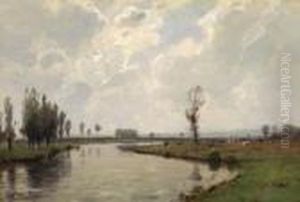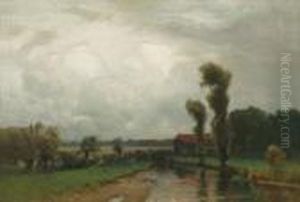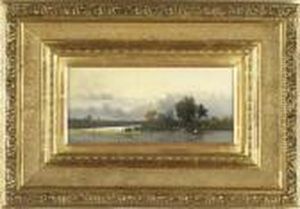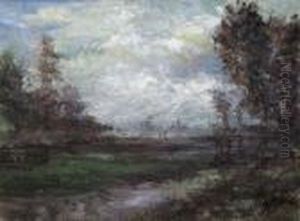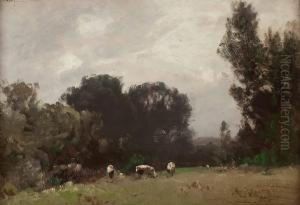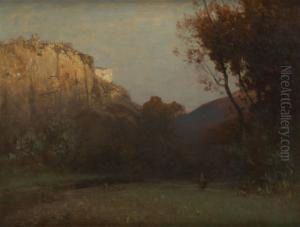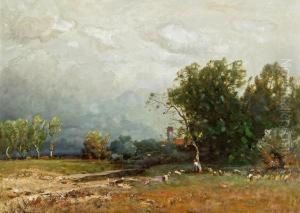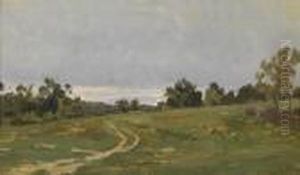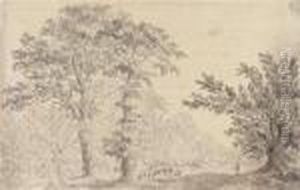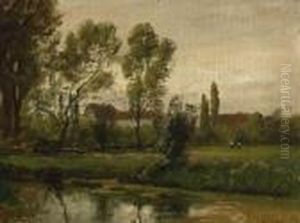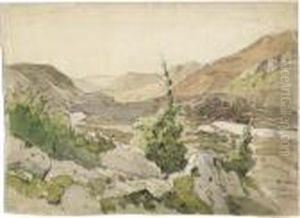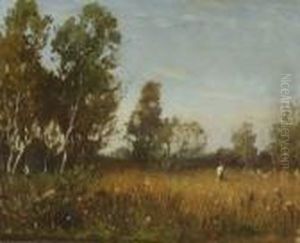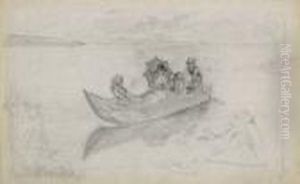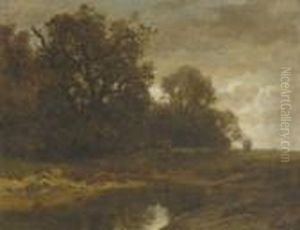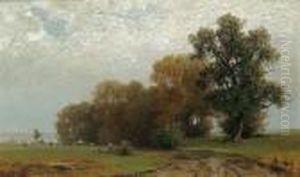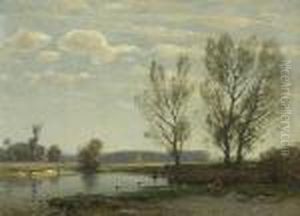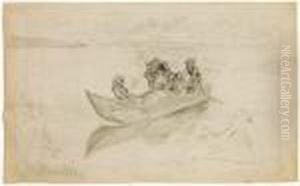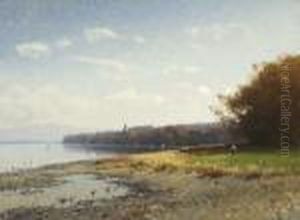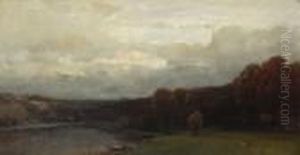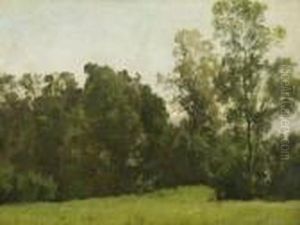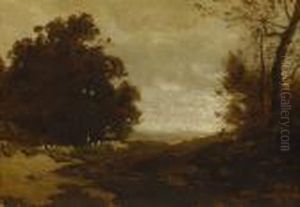Ludwig Willroider Paintings
Ludwig Willroider was an Austrian landscape painter and engraver born on July 6, 1845, in Villach, Carinthia. He showed an early interest in art and began his formal training at the Academy of Fine Arts in Venice, where he was influenced by the Venetian landscape tradition. After his studies, he returned to his hometown for a brief period before moving to Munich, which was a central hub for artists in the 19th century.
In Munich, Willroider further developed his artistic skills and became part of a circle of landscape painters. He was particularly known for his realistic depictions of the Bavarian and Tyrolean Alps, which he portrayed with great detail and atmospheric effect. His landscapes often conveyed a sense of vastness and tranquility, capturing the changing light and seasons with a delicate palette and meticulous brushwork.
Throughout his career, Willroider exhibited his works in various cities, including Vienna, Munich, and Berlin, gaining considerable recognition for his contributions to landscape painting. He was also awarded several medals for his artistic achievements.
In addition to painting, Willroider was accomplished in the art of engraving, through which he reproduced his own paintings as well as the works of other artists. This allowed his art to reach a broader audience and helped to establish his reputation.
Ludwig Willroider's works are characterized by a harmonious blend of naturalism and romanticism, which was typical of the period. His approach to landscape art was influential in his time and provided inspiration for future generations of artists.
Willroider's health deteriorated in the last years of his life, and he eventually passed away on April 10, 1910, in Munich. His legacy lives on through his evocative landscapes that continue to be appreciated for their beauty and technical mastery.


